- Wondering how to get Monopoly GO! free rolls? Well, you’ve come to the right place. In this guide, we provide you with a bunch of tips and tricks to get some free rolls for the hit new mobile game. We’ll …
Best Roblox Horror Games to Play Right Now – Updated Weekly
By Adele Wilson
Our Best Roblox Horror Games guide features the scariest and most creative experiences to play right now on the platform!The BEST Roblox Games of The Week – Games You Need To Play!
By Sho Roberts
Our feature shares our pick for the Best Roblox Games of the week! With our feature, we guarantee you'll find something new to play!All Grades in Type Soul – Each Race Explained
By Adele Wilson
Our All Grades in Type Soul guide lists every grade in the game for all races, including how to increase your grade quickly!
Puzzle Craft 2 Tips, Cheats and Strategies
Puzzle Craft 2 is a match-3 town builder from AT Games. In this game, you’ll play line-matching puzzle boards to collect resources like wood and veggies in order to expand your ever-growing kingdom. Gamezebo’s Puzzle Craft 2 Tips, Cheats and …
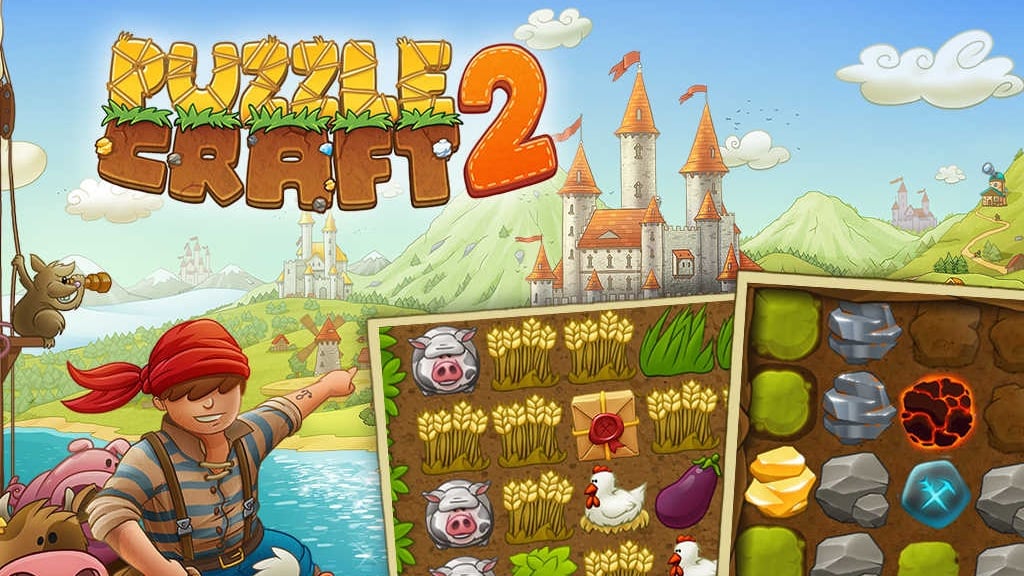
Puzzle Craft 2 is a match-3 town builder from AT Games. In this game, you’ll play line-matching puzzle boards to collect resources like wood and veggies in order to expand your ever-growing kingdom. Gamezebo’s Puzzle Craft 2 Tips, Cheats and Strategies will help you master the arts of item collecting and village planning in this charming world.
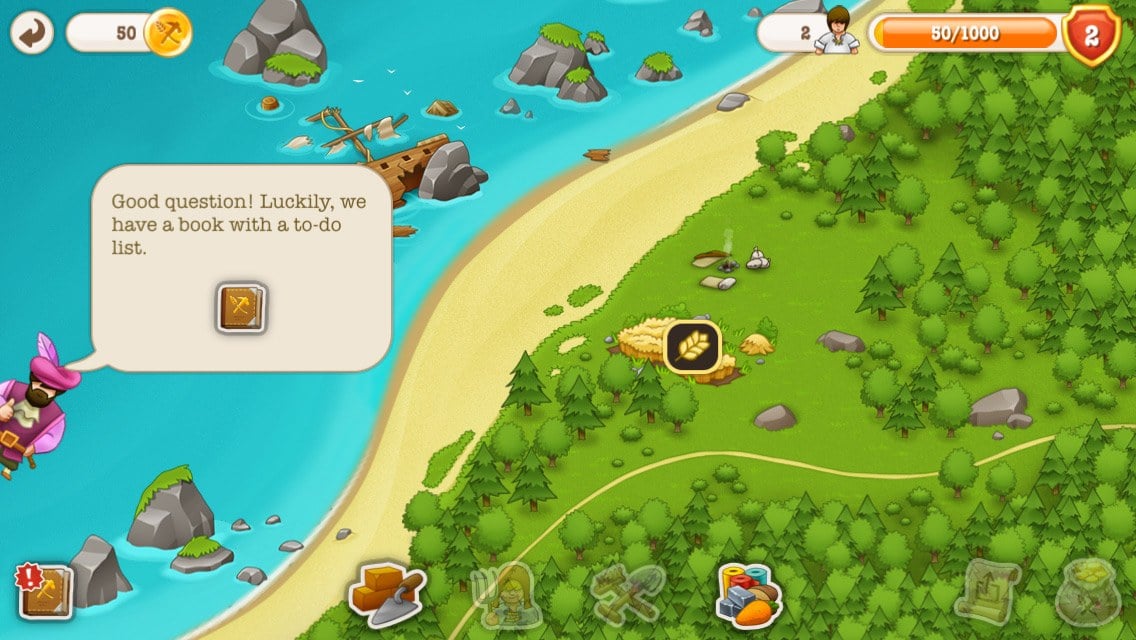
- Pick a single goal to focus on. Puzzle Craft 2 introduces a lot of new features that weren’t included in the original entry. This time around, you’ll have to manage three types of puzzle boards, three currencies, challenges, achievements, and selecting which types of puzzle tiles to use. These options can be overwhelming at first, even to experienced kings and queens. Pick one goal—whether it’s a specific building you want to create, challenge you want to complete, or puzzle tile you want to unlock—and work towards that. Don’t get bogged down trying to complete multiple goals simultaneously. Sometimes they will work in tandem—like if you’re trying to collect turkeys and pigs—but often you’ll need to pick tiles that will support your current goal—like a tree that gives veggies instead of chickens, if you’re trying to get soup.
- This is also helpful as it will keep your puzzle boards fairly easy to solve. If you are trying to collect lots of different items at once, you’re going to end up with a lot of different puzzle tiles on the board—a few chickens, a few pigs, a few veggies, etc. This will make it harder to make matches and get long chains than if you’d just aimed for one of these.
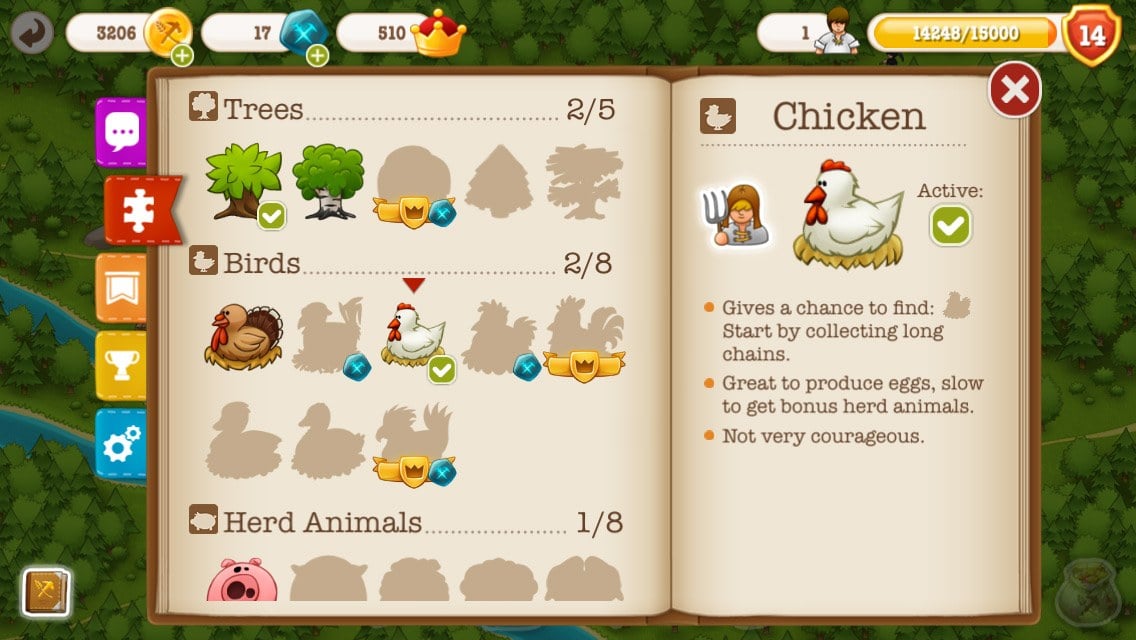
- Always adjust your puzzle tiles for the goal you’re working towards. One of the biggest changes and important features in Puzzle Craft 2 is the addition of different types of puzzle tiles per category. Now, for example, instead of just chickens, you can use chickens or turkeys or pheasants or a half dozen other types of birds. The same is true for all of the categories: grass, grain, vegetables, fruits, trees, birds, herd animals, and cattle. Whichever tile type for the category is “active” is the one that will appear on your puzzle board when you play, and the active tile can be changed any time between puzzle boards as long as you have the tile type unlocked.
- These different tile types are important because each has a strength that will come in handy for different goals. When you select a type in the puzzle tiles menu, it will give you some info on its abilities. For instance, under “turkey” it says “2 free moves,” which means you can collect turkeys twice without using any move counts. Chickens, meanwhile, say “Great to produce eggs, slow to get bonus herd animals.” This means that you’ll need fewer chickens to earn an egg, but more chickens in a chain to get a herd animal, like a pig. So, if you were trying to get eggs, you’d want to activate chickens. But if you were trying to get herd animals, you might want to switch to turkeys.

- In order to see exactly how many of a tile type is needed to collect certain items, you need to activate the tile you’re curious about. Then exit the tile type menu, and open the worker assignment menu. When you tap on workers related to that tile, it will show you how many of that tile are needed to gather its associated item. So, again, using birds as an example: we activated turkey and went into the worker menu. We tapped on the “Poultryman,” whose icon shows us that 9 turkeys will give us 1 egg. We want to compare this to the chicken, so we go back to the tile menu and activate chicken. Then return to Poultryman and check his icon: it now says 7 chickens will give us 1 egg, which means you need 2 fewer chickens than turkeys to get a single egg. This is the easiest way to get definitive differences between tiles before entering a puzzle board.
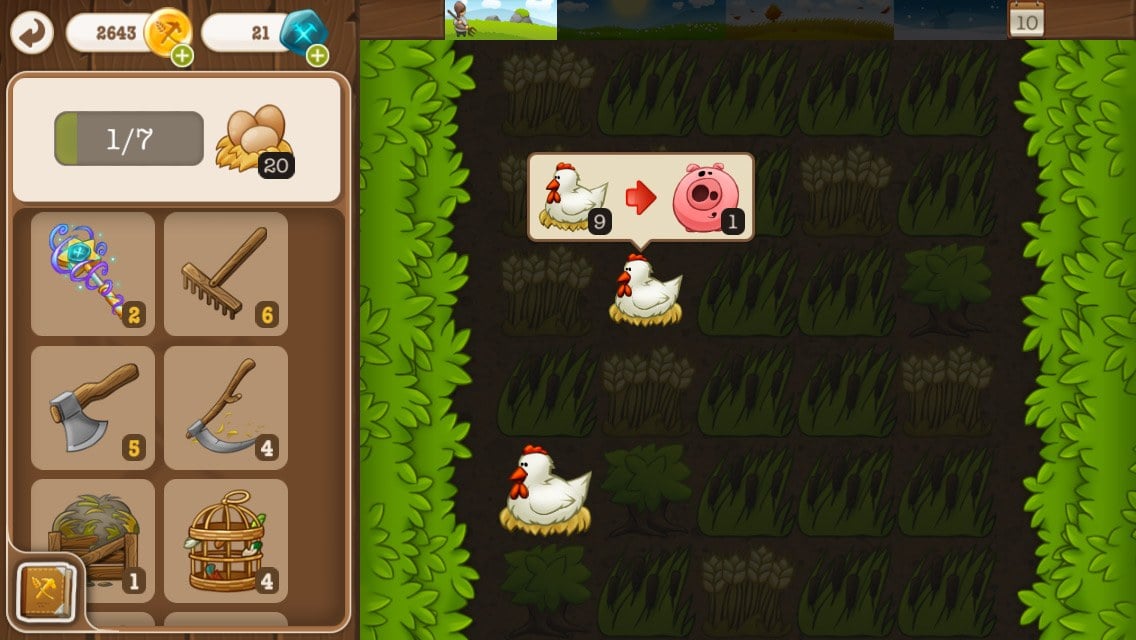
- If you want to see the number of tiles needed for your currently active tile types while you’re in the puzzle board, tap on the tile in question: above your tools menu, this will show you the number needed to collect its normal item, how many you already have out of this, and how many of the item you own total. In the image above, we need 7 chickens to make an egg, we have 1 chicken already (counting the one we’re touching), and we own 20 eggs. To see how many of the tile you need for its bonus item—e.g., grain for grass, veggies for grain, fruit for veggies, etc.—tap and hold on the tile type. Using the image above again, we need to collect 9 chickens in a single chain to get 1 herd animal.
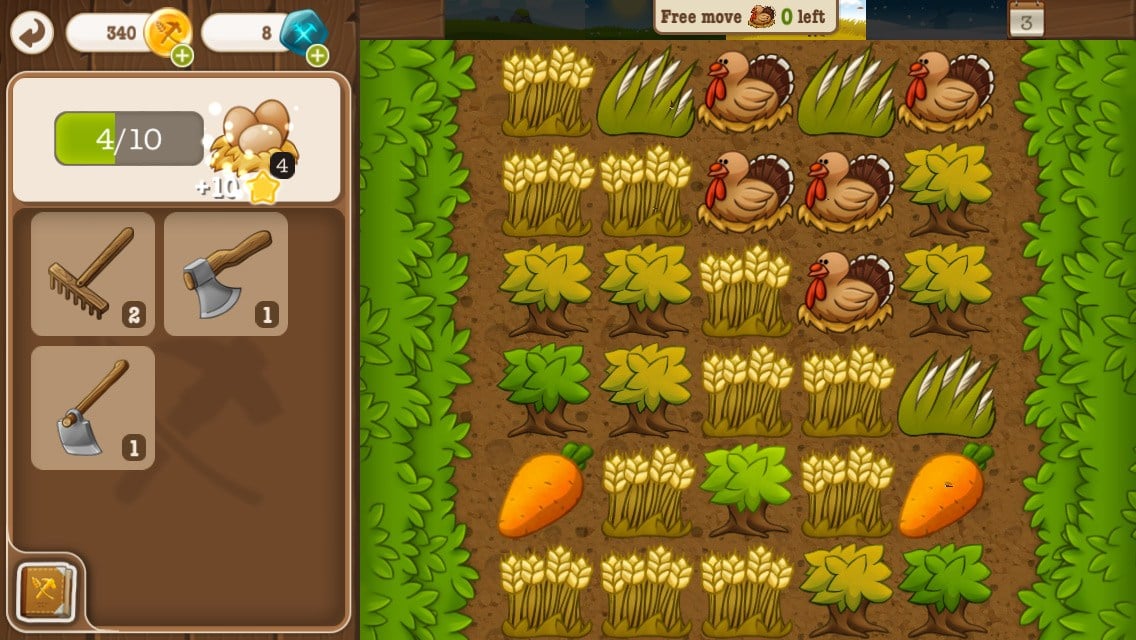
- Pay attention to “free moves” notices on the puzzle board. You’ll unlock a lot of different free move types as you progress through the game which let you collect certain tile types without using a move count. These are extremely valuable, especially since you often have a short amount of moves on the farm board. When you use one of these free moves, you’ll get a short notice that pops up at the top of the board, informing you how many of that type of free move you have left. So, if you are using turkeys and you match one set of turkeys, you’ll get a pop-up that says “Free move (turkey icon) 1 left.” This means you have one free turkey match remaining. If you had other free moves available and made them, like collecting rats, you would get the same notification but with a rat icon and the number of moves for it.
- There’s no way to see how many of these free move types remain except when this pop-up appears, so you should 1) be aware of which tile types currently offer free moves and 2) be sure to read the pop-up when it does appear.
- Free moves count on multi-collection items, too. So, if you earn free moves for collecting rats and you have the Master Ratcatcher building—which lets you collect rats along with grass—you will earn a free move when collecting rats alone or rats + grass.
- Free moves also stack. So, let’s say you’re using turkeys, which naturally give 2 free moves per puzzle board. And you also have the Small Animal Pen building, which gives 3 free moves when collecting any type of bird. If you play with turkeys, you’ll have a total of 5 free moves!
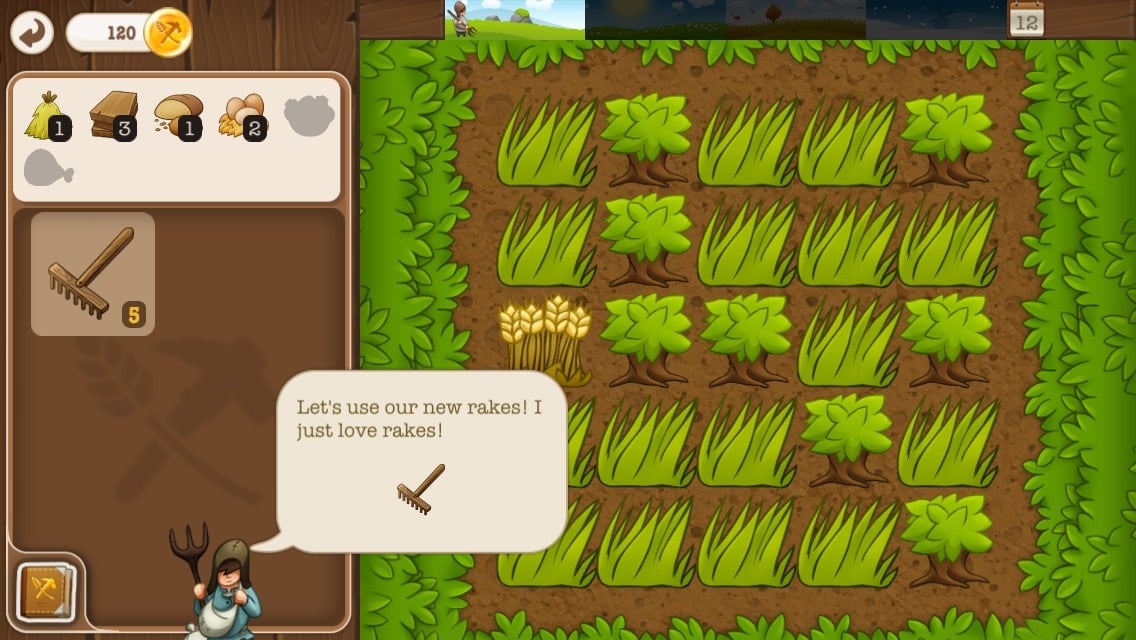
- Always stock up on tools before starting a puzzle board. Tools are one of the most important aspects of the game, and there are certain tools you should never be without. First, always have the tools you want before entering a puzzle: crafting a tool is much, much cheaper than buying it outright. And if you run out of a tool within a puzzle, the only way to get more before the end is to spend gold to buy more. For instance, using a single shoven in the mine will cost 40 gold if you run out, but crafting a shovel only costs 1 wood—one of the easiest and cheapest resources to collect. Make it a habit to check your tool crafting menu before playing any puzzle board.
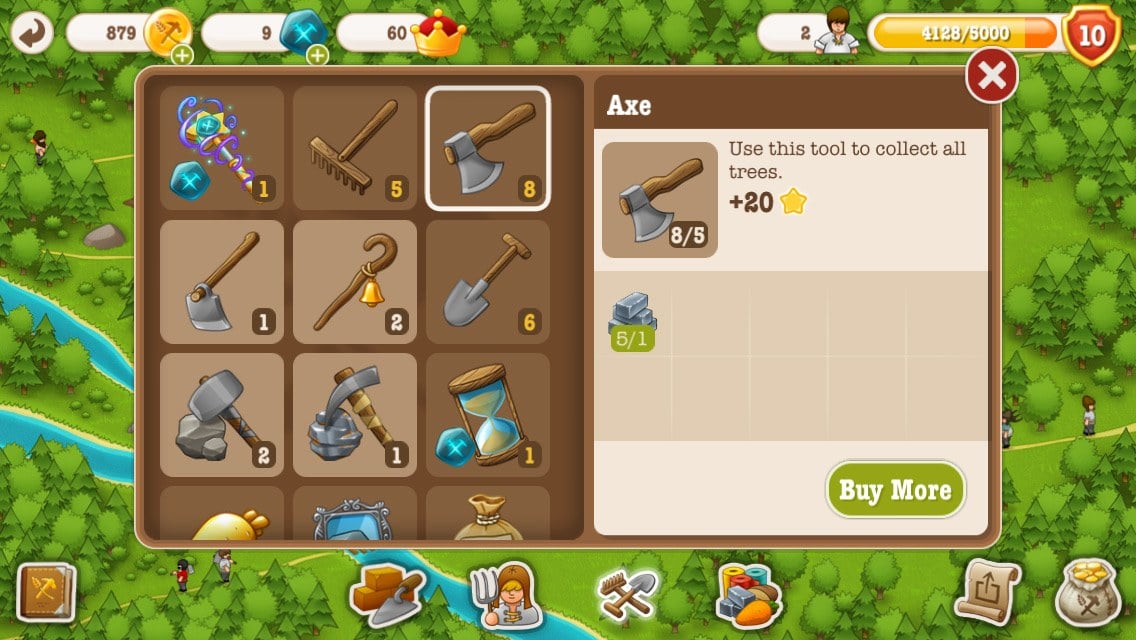
- You can return to past towns to craft tools. Since you don’t bring resources with you, previously completed towns will retain those resources and you can use them for making tools. You can also still play their puzzle boards to earn resources specific to that town, and often for cheaper than your current town’s boards. And since you can craft any tool you have knowledge of—even if it was unlocked in a later town—returning to an earlier village for crafting is an easy way to save resources for your current building projects. The only downside is past towns will only have access to resources available to them, so a town without an ocean can’t craft tools requiring fish or salt, for instance. But any tools you do make will remain with you when you return to the current city.
- Most buildings in your towns reward tools on a regular basis, so be sure to check in often if only to tap on your buildings and earn their rewards. If you’re maxed out on a tool that a building gives you, however, you’ll remain at the current max amount, so try to be below max tools before collecting your building rewards. If you want to see what a building gives you any time, just tap on it to view its reward and time until it’s given.
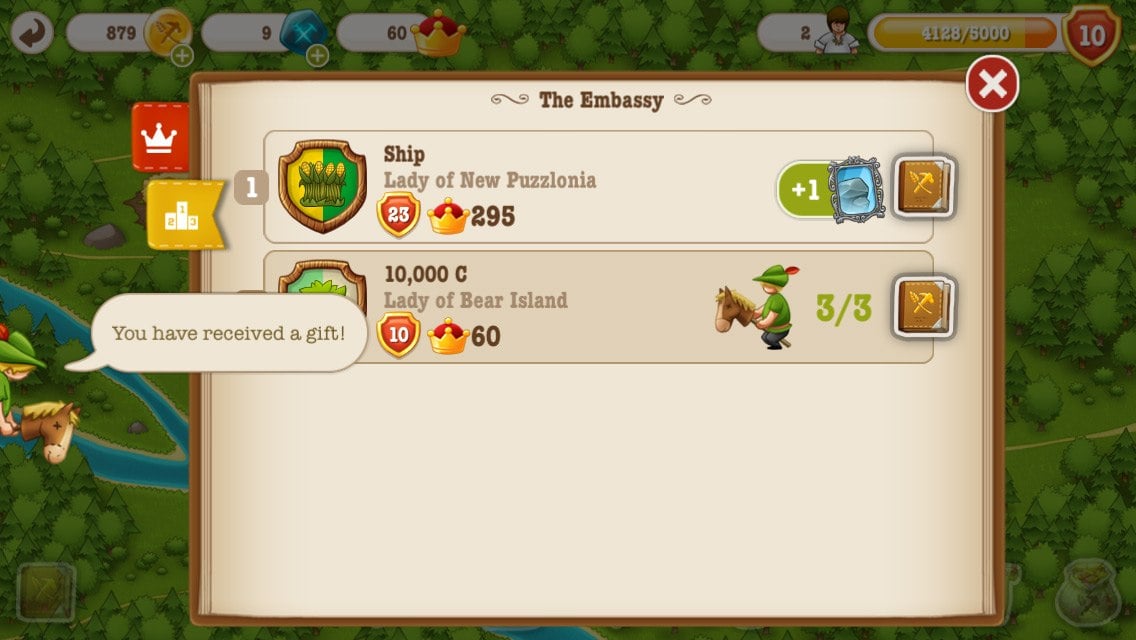
- One of the best ways to get tools is by sending to and receiving from friends. Once you build an embassy, you can tap on it to open the quest menu and leaderboard/friends menu. The quest menu lets you attempt tasks that reward influence points. The leaderboard/friends menu will show you any Game Center friends that are also playing Puzzle Craft 2, as well as Facebook friends (if you sign in with Facebook). If you tap the green arrow next to a friend’s name, you will send them a messenger bearing gifts.These gifts are a random assortment of tools, usually at least two, and sometimes including magical tools you can otherwise only get from the magic portal. Sending gifts doesn’t cost anything to the sender, and the recipient will receive tools based on their status: so, if one player is farther along in the game with more tools unlocked, they will possibly get these later tools even if the sender is much earlier in the game. If you work with friends and agree to send each other gifts every day, you can easily gather a nice tool stockpile, especially since you can send 3 messengers every 24 hours (messengers respawn once every 8 hours). The other really nice thing about friend-sent tools it that they can surpass the tool maximum limit: so if you have the max 5/5 shovels and your friend sent you a messenger who brought a shovel, you would end up with 6/5 shovels.
To collect your friend-sent gift, either tap the pop-up when it appears (gifts show up almost instantaneously after being sent) or go to the friends list in the embassy and tap the gift icon next to your friend’s name. In the image above, we have a gift waiting for us from Ship: and it’s a magic tool, the metal mirror!
- Hire as many workers as you can afford. Besides tools, workers are the other most critical component to making progress. Workers remain with you when you leave for the next town, so you’re constantly building up your arsenal of bonuses received from them. There is a max number of workers you can hire per job at any given time, so you’ll never be able to “over”-hire, and should feel free to hire to your max whenever possible.
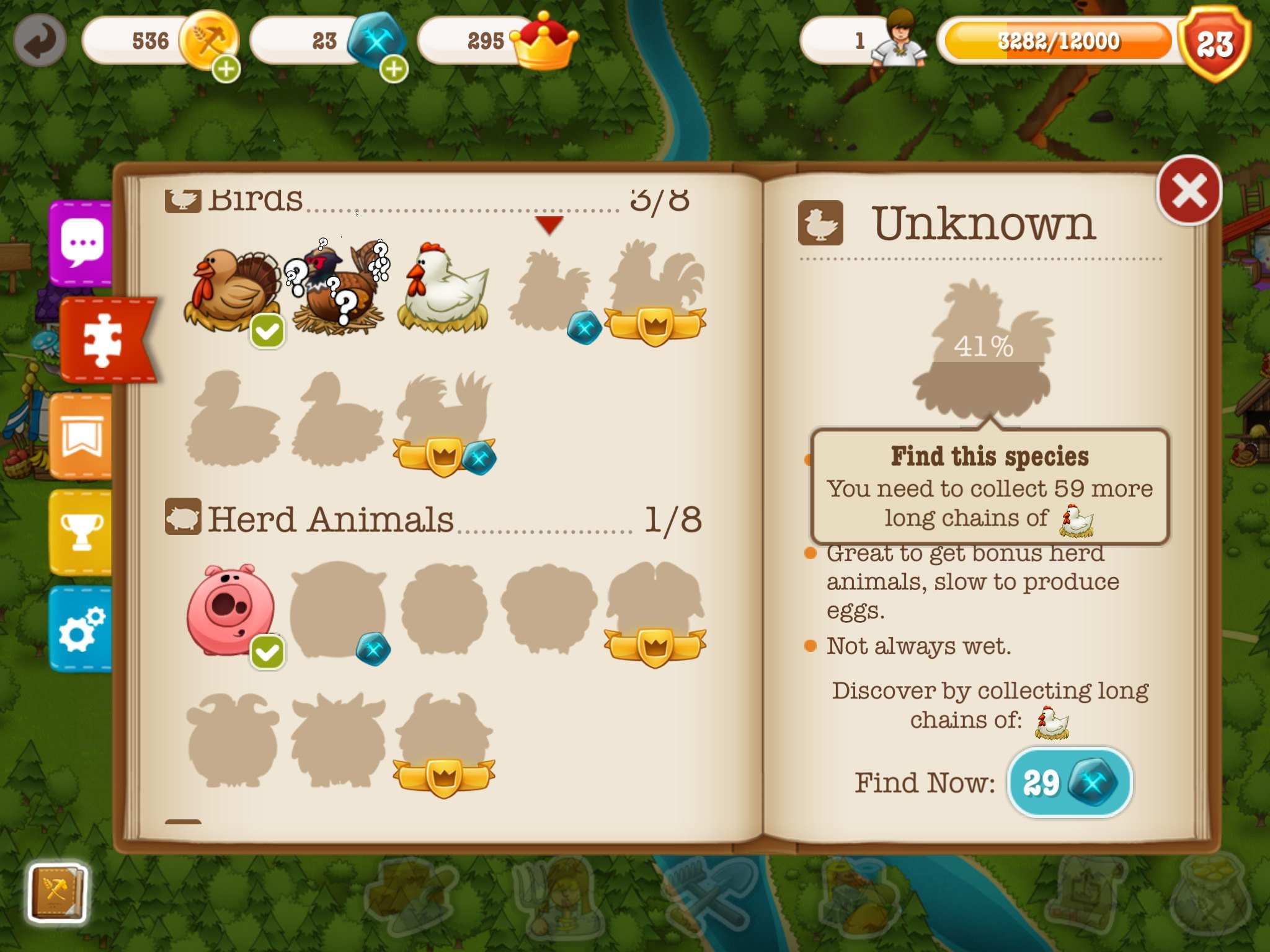
- Besides just being able to collect items faster and more easily, workers directly affect the “long chain” requirement for researching and unlocking new tile species. When you have to collect a certain number of “long chains” to unlock a tile type—for instance, in the image above we still need 59 “long chains” of chickens to discover the next type of bird—the “long chain” means however many are needed to get that tile’s bonus item. (E.g., for veggies, the bonus is fruit; for grass, the bonus is grain; for birds, the bonus is herd animals, etc.) So, usually, without any workers reducing the tiles needed, it’s 10 tiles. If you hire workers that reduce the number of tiles needed to get that bonus item—say, from 10 to 8—then the “long chain” requirement is reduced from 10 to 8 as well. This means it becomes easier to unlock new species over time and with more workers, so don’t feel too overwhelmed by those “100 long chain” requirements early on.
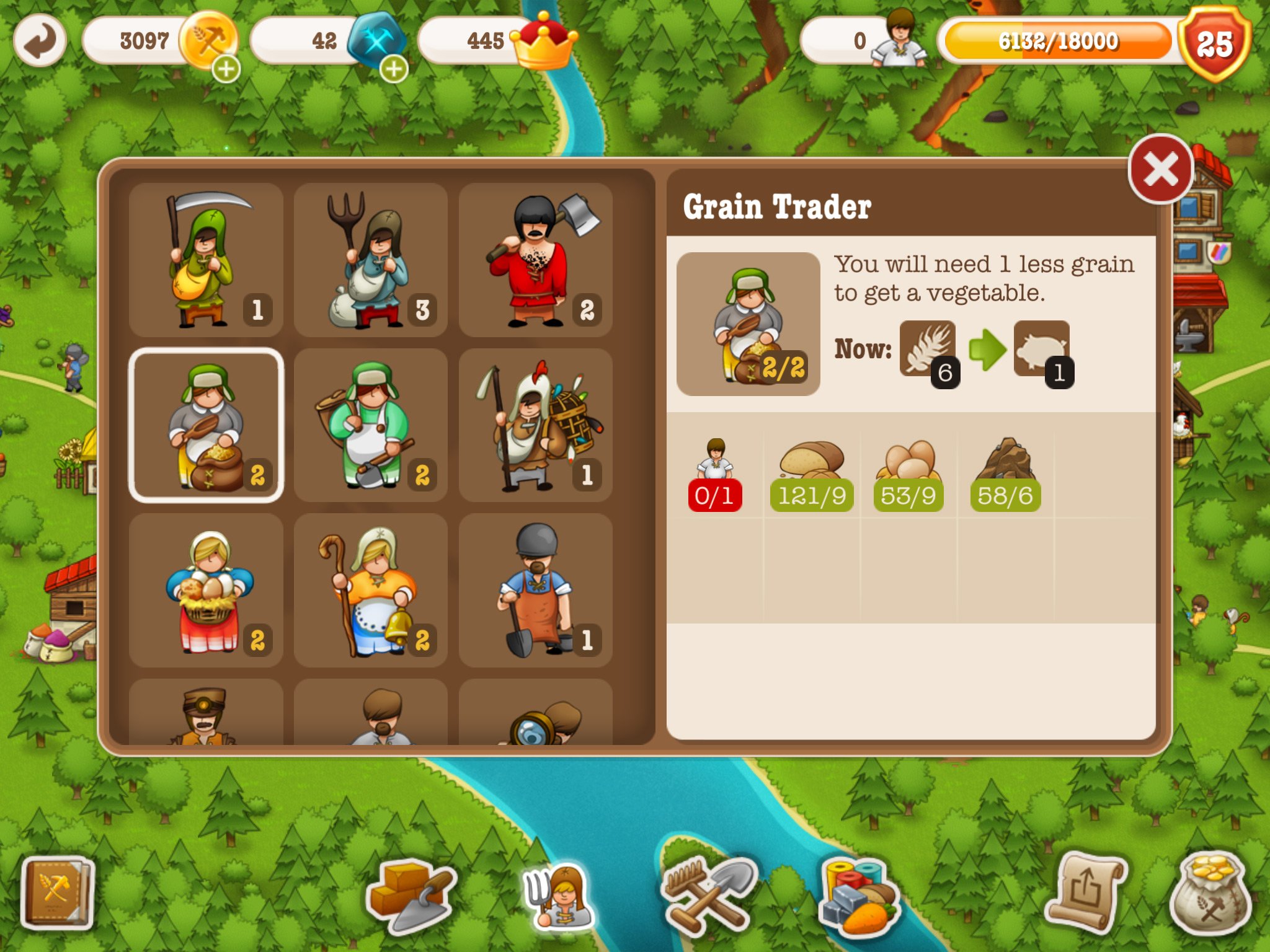
- Workers’ bonuses apply to tiles regardless of their bonus items. For example, the Grain Trader makes it so you need one less grain (per assigned worker) to collect a vegetable from grain. However, some grain, like buckwheat, gives herd animals instead of vegetables. The Grain Trader applies to this bonus as well, and if you have buckwheat active when you check the worker menu, her icon will show a herd animal instead of a veggie. The text still says “vegetable,” but go by what the icon shows and the base tile type the worker applies to.
- Researching tiles allows them to utilize bonuses from workers. When you first unlock a new tile type, you’ll have to collect a certain amount in order to “research” it. (During this time, there are magnifying glasses floating over the tile in the tile type menu.) Once researched, you’ll get the full amount of bonuses from associated workers. For instance, we had 2 Lumberjacks and had not researched willow trees yet. Before researching, willow trees required 10 lumber to produce wood. After researching, they required 8.
- The standard way to get more workers is to build houses and cottages. However, you can spend the premium currency, runes, at the magic portal and call forth workers. One worker will cost 3 runes, and they will join you permanently. This is a great deal for what is one of the best helpers in the game, and calling forth workers should be one of your primary uses of runes.

- Be prepared before you upgrade your town. Unlike its predecessor, Puzzle Craft 2 tasks you with building multiple towns across an expansive kingdom. This means building a town to its peak and then moving on to the next, mostly empty, plot of land. You’ll be able to move on as soon as you build the structure that has a covered wagon with a green arrow on it—in the image above, you can see this icon on our Town Hall blueprint. Once you build this structure and choose to move on, a number of things happen:
- First, as soon as you build it, quests and challenges for that town stop appearing. You’ll be able to finish whatever challenges are currently active, but after that, you won’t receive any new challenges in that town. You’ll have to move on to the next village to complete new challenges.
- When you tap on the caravan and choose to move on, you’ll pack up the following: your gold, tools, workers, and current level. You will leave all resources behind in the current town’s stockpile and you will also lose all experience points accumulated. This means if you’re level 15 with 9,000 EXP accumulated towards the next level, you’ll remain at level 15 but lose those 9,000 points. So, if you’re about to leave town and are close to reaching the next level, it’s wise to level up first.
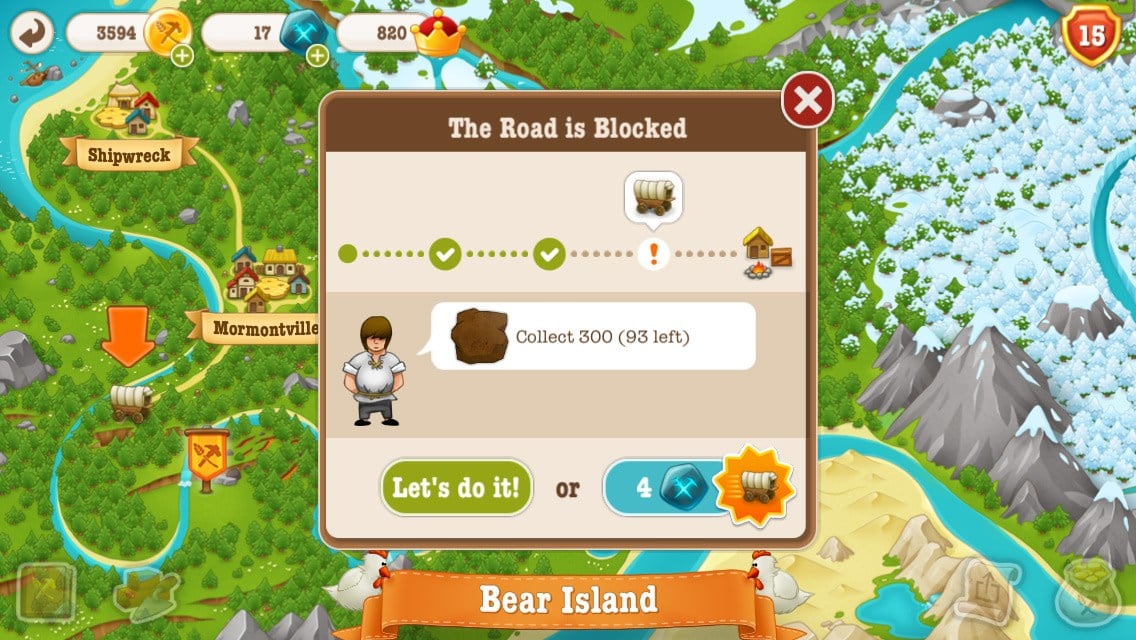
- You can still farm and mine for resources and craft new tools. Since your tools go with you, there’s no harm in stockpiling. When you actually leave for the next town, you’ll need to complete three different challenges along the way before getting there. During these challenges, you don’t control the tile types that appear and you don’t get to keep any of the resources, so it’s best to just focus on the goal and not waste effort trying to collect anything of value. If you’re having trouble with the challenges, you can return to past towns any time and craft more tools to help you.
- You can still build buildings in past towns that you may have skipped the first time around, but their level requirement will be much higher. For example: we left the second town at level 15 without building our final cottage. After reaching the third town, we returned to the second; the cottage was still available to build, but it now requires us to be level 23 before it can be created. This means it’s always best to build everything within a town before leaving, but if you don’t, you’ll be able to resolve it eventually.
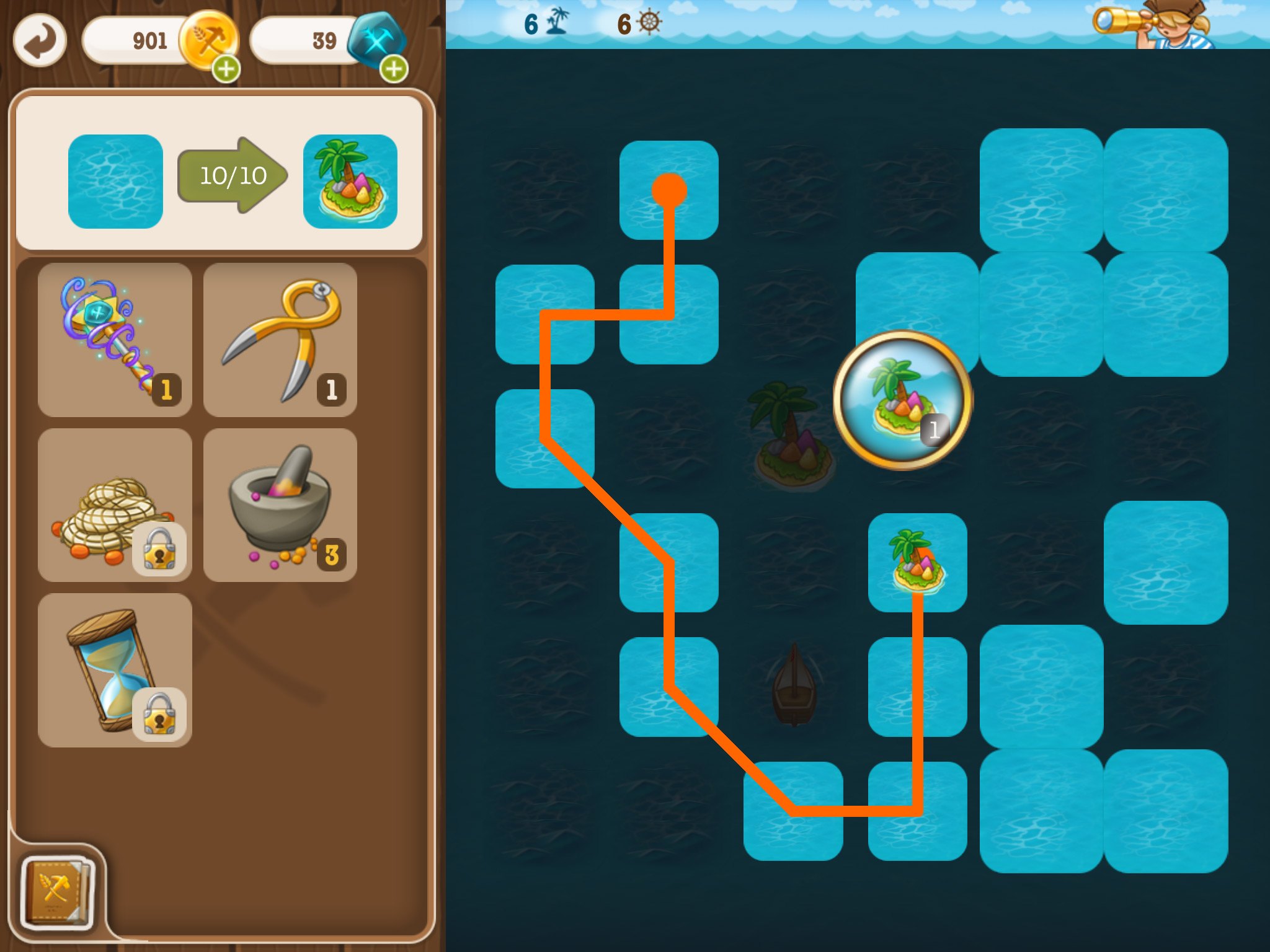
- You control where islands appear on the sea. When matching water during the navigation portion of the ocean puzzle board, islands (or fish) will pop up in the last tile needed to form them. So if you need 10 shallow water tiles to form a spice island, the island will appear on the 10th grid you connect. Because of this, you can somewhat control where islands and fish appear: use this to your advantage and try to create them close to each other and to your ship.
- While on the sea, always go for treasure chests. If a treasure chest appears, make it a top priority: you’ll often get 1-3 of an actual item, like salt or fish, that would otherwise take numerous tiles to create. The chest will almost always be beneficial even if you have to abandon other islands to reach it.
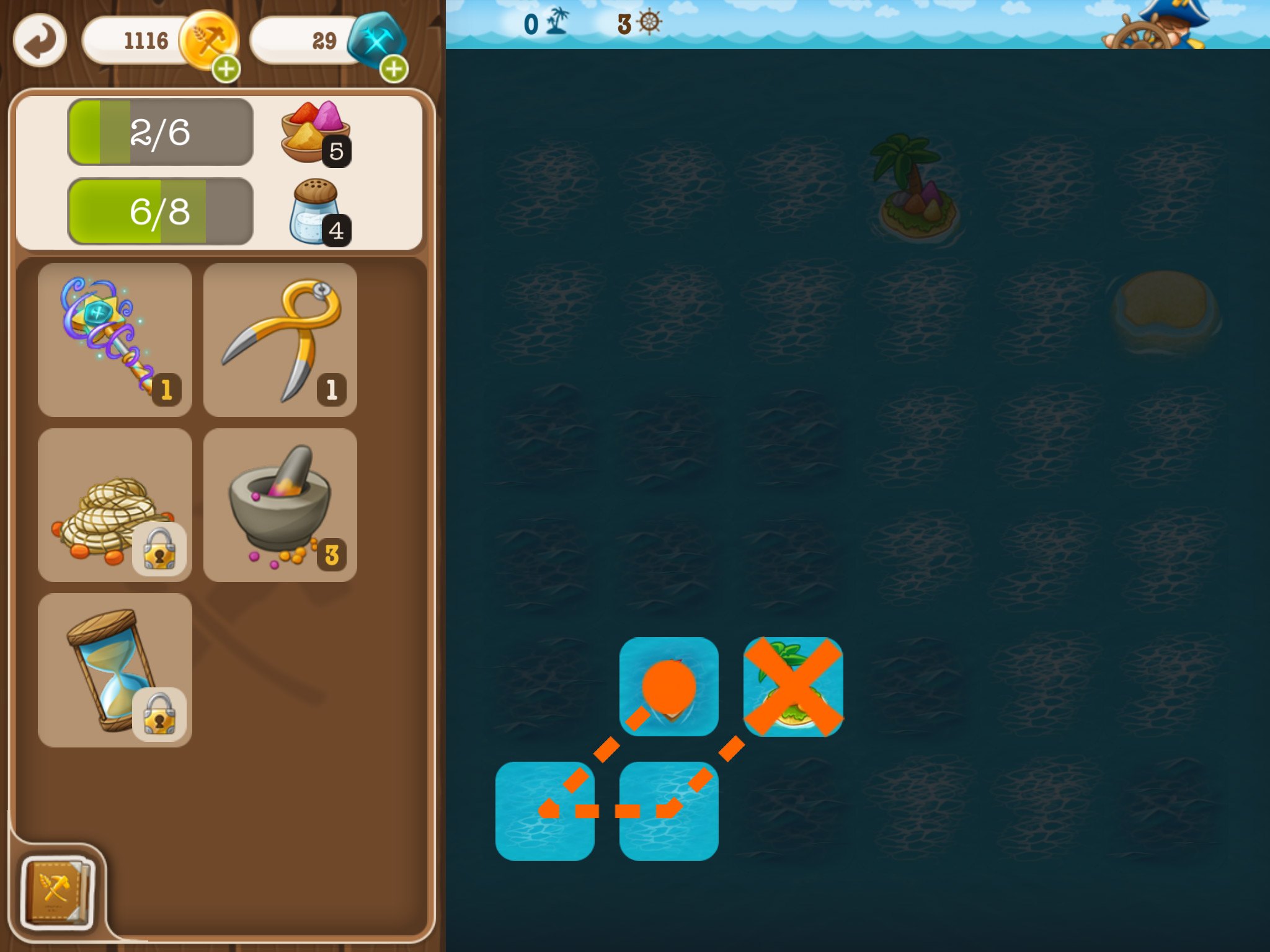
- When collecting islands or fish, use all of your moves. This is how you get the water needed for salt and water, so don’t waste any moves. In the image above, we could have gone straight to the island, but we wanted to use all of our moves to get extra water. You also don’t have to land on the island or fish last: you can move through it to water as your final location. So long as you touch the island, fish, or treasure chest, you’ll pick it up.
- General tips maximizing your game:
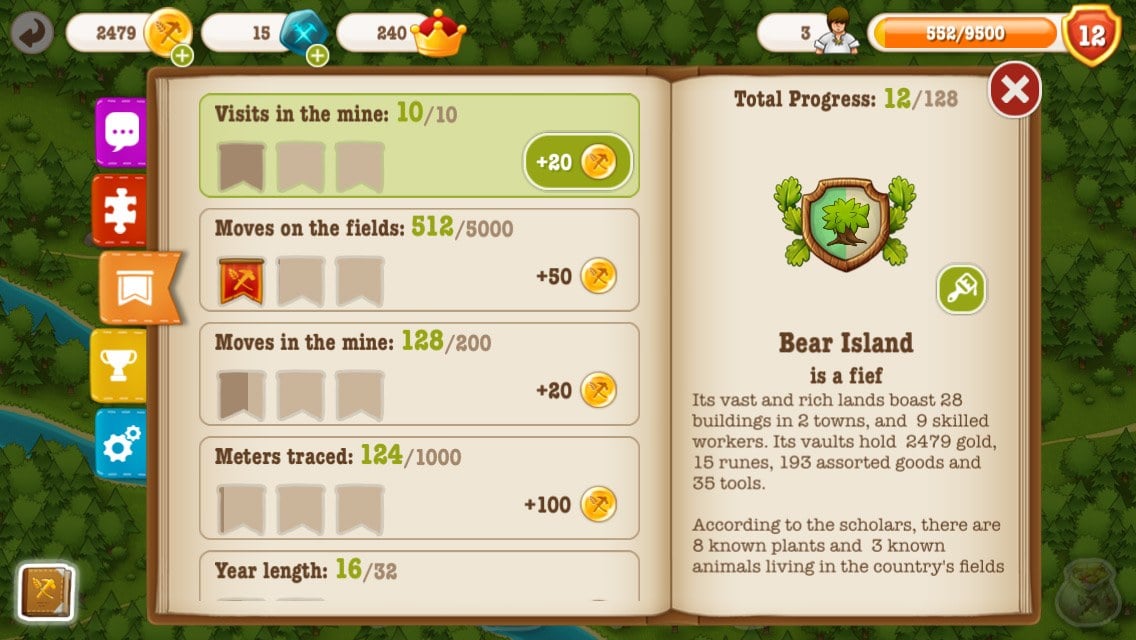
- Always check bouncing icons in your menu. This means you have something new to collect or unlock. If the achievements or trophies icons are bouncing, you have coins or influence points available to collect by tapping on the completed challenges and their associated reward button.
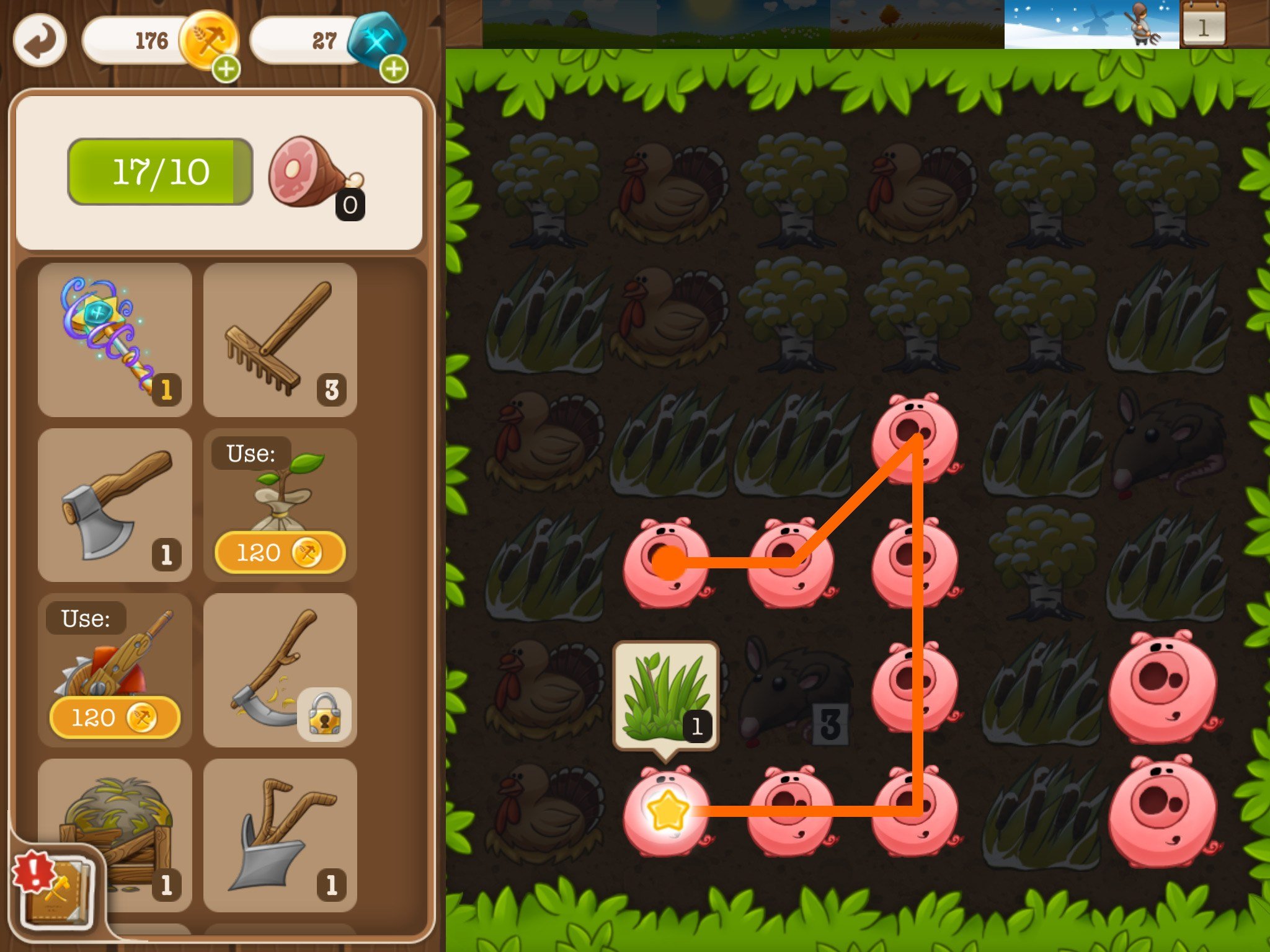
- When you can “discover” a new species in a new town, you’ll receive a dark green grass icon upon tap-holding the correct tile. For instance, in the third village, when collecting pigs, we received the grass icon pictured above. This icon indicates an unlockable tile type that will be unlocked if you reach the “1” from making a long enough chain. In our case, an 8-pig chain unlocked a cattle type, but in other instances it will be whatever that tile type unlocks next. If you are matching a tile type that doesn’t have an unlockable and doesn’t reward a bonus item upon making a large chain—the way grass makes bonus grain or chickens make bonus herd animals—you will see a gold coin in this “bonus chain” icon area instead.
- Build the witch’s hut for bonus coins and runes. Once built, you’ll be able to tap the witch’s hut to watch short video ads for rewards (so long as there’s a blue exclamation point on it). These are usually less than 30 seconds each and will give you anywhere from 1 rune to 80 coins per video, or occasionally 10-20 influence points. The fewest coins we’ve ever received was 30, and you can usually watch about 20 videos per day, which adds up quickly.
- Gold is always better spent on playing puzzle boards than buying resources outright. Resources are ridiculously expensive, and you’ll almost always recoup the cost of playing a puzzle board by earning multiple resources in a single run.
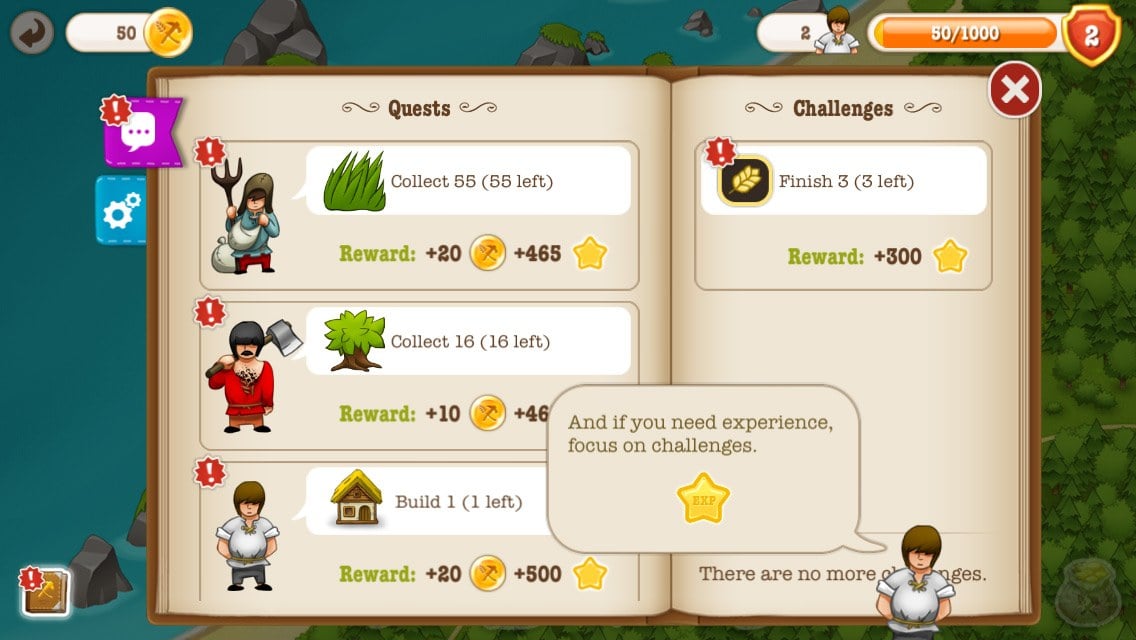
- Complete challenges for extra EXP. This is one of the first tips received in the game, but you probably won’t need to remember it until you’re a few towns in. Most buildings have a level requirement and you won’t be able to construct them until reaching that level. Although you earn EXP for playing puzzle boards and using tools, the most EXP you’ll gain will come from challenges—either the villager requested quests (which are usually “build X”), or the constantly-available pair of challenges next to the quests. These latter challenges usually involve collecting a certain number of puzzle tiles or using a number of tools, so they can be completed at any level. They will also be replaced by new challenges immediately after being completed, so they provide a constant stream of ways to earn extra EXP.
- You can remove single tiles of gas in the mine by tapping on them. This costs a turn, but can be worth it if you’re out of lamps.
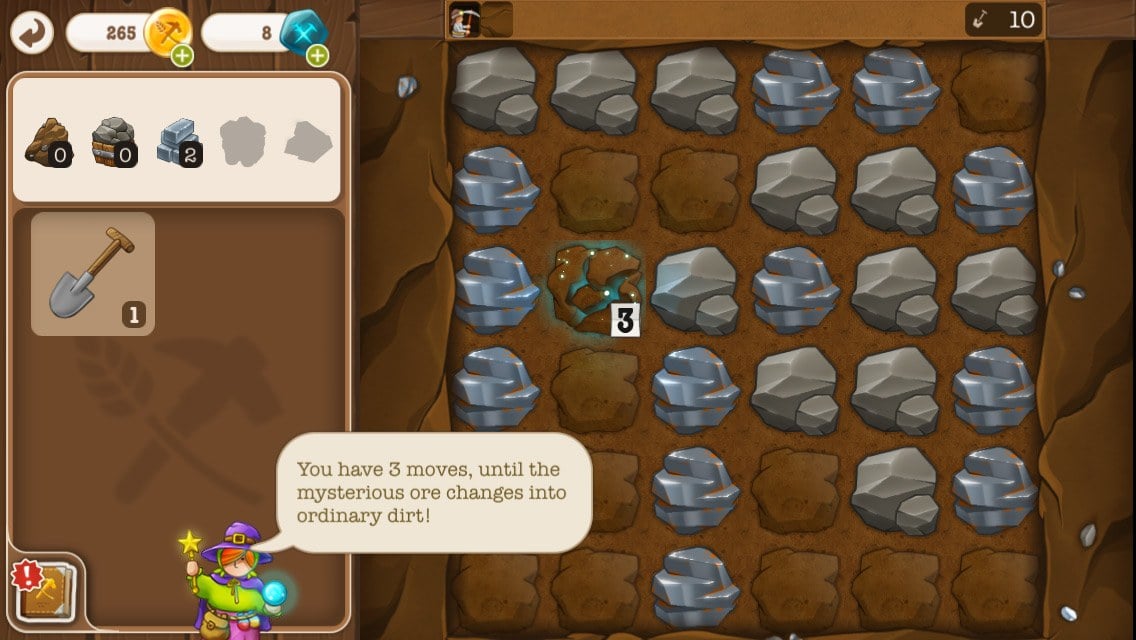
- ”Dangerous” tiles with countdowns—like rats, lava, and hidden runes—will continue counting down even if you use a tool. This is important to keep in mind: even though tools don’t count as a move on your counter, they still count as a move for these negative-effect tiles. So if you had lava at timer: 1 and used a shovel, the lava would then hit 0 and move down / explode.
- Speaking of lava: sometimes it’s best to remove everything below it and let it destroy the very bottom row. If you collect everything in lava’s column below it, it will immediately drop to the bottom row. Otherwise, it slowly drips down the board, devouring everything in its path and turning any rocks it touches to rubble.
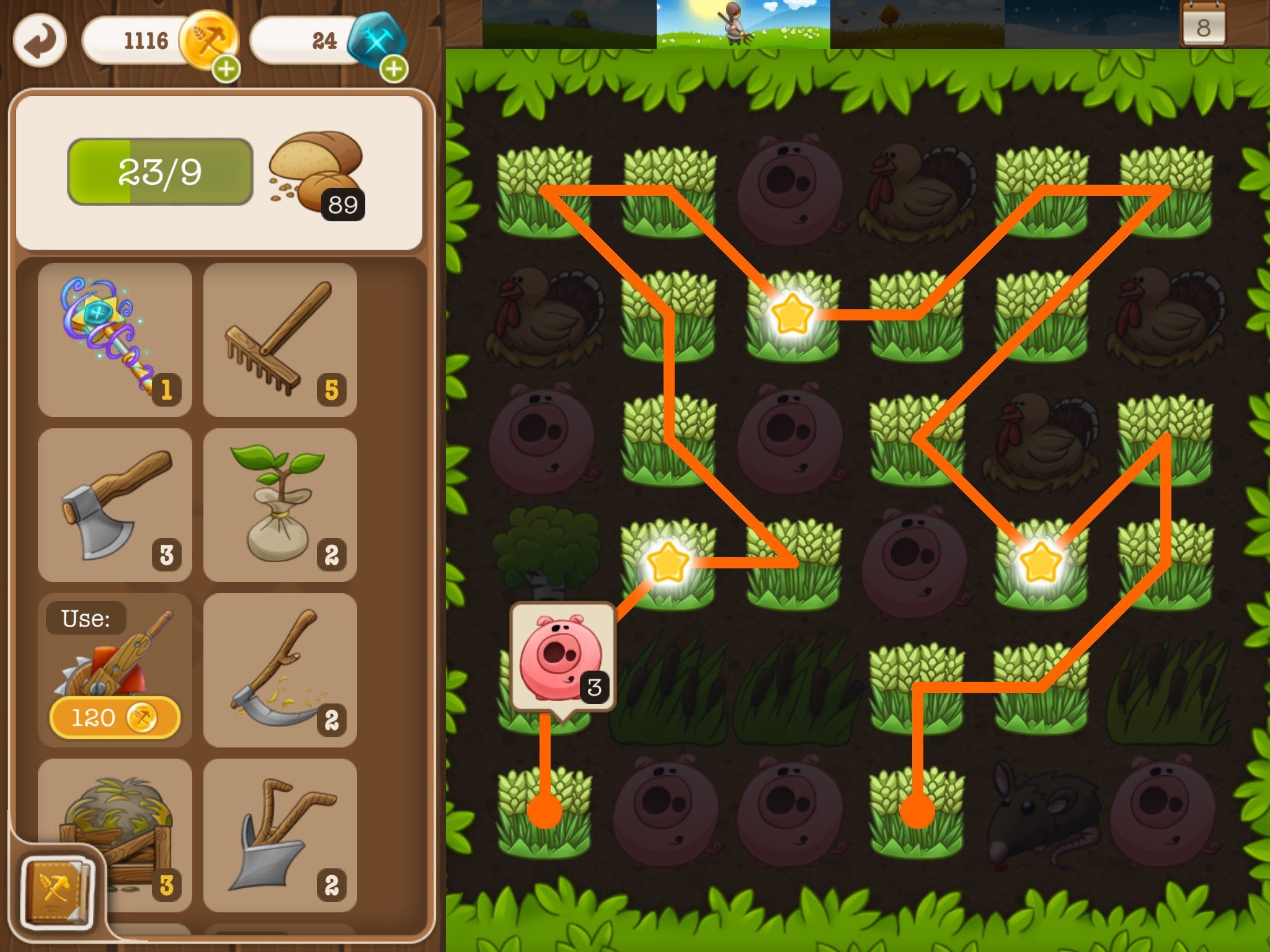
- Master the art of the corner turn. It’s almost always to your advantage to make the longest chains possible, and using corners where you can access tiles diagonally will come in handy basically every time you play. Sometimes when you first glance at a series of tiles, it looks like you won’t be able to access them all, but if you plan your route and turn at diagonals properly, you will reach every one. It’s something you get used to the more you play, so at first just keep in mind: think diagonally.
- Finally, don’t feel rushed. Puzzle Craft 2 was designed to take awhile to beat and is not meant to be tackled in a single afternoon. It will take time to earn and build everything: some days may be better spent just collecting taxes / tools and taking a break from actually playing the puzzle boards. Don’t be surprised if you haven’t made a lot of progress in a short period of time. You will be able to unlock everything: take your time and enjoy the ride!
More articles...
Monopoly GO! Free Rolls – Links For Free Dice
By Glen Fox
Wondering how to get Monopoly GO! free rolls? Well, you’ve come to the right place. In this guide, we provide you with a bunch of tips and tricks to get some free rolls for the hit new mobile game. We’ll …Best Roblox Horror Games to Play Right Now – Updated Weekly
By Adele Wilson
Our Best Roblox Horror Games guide features the scariest and most creative experiences to play right now on the platform!The BEST Roblox Games of The Week – Games You Need To Play!
By Sho Roberts
Our feature shares our pick for the Best Roblox Games of the week! With our feature, we guarantee you'll find something new to play!All Grades in Type Soul – Each Race Explained
By Adele Wilson
Our All Grades in Type Soul guide lists every grade in the game for all races, including how to increase your grade quickly!







